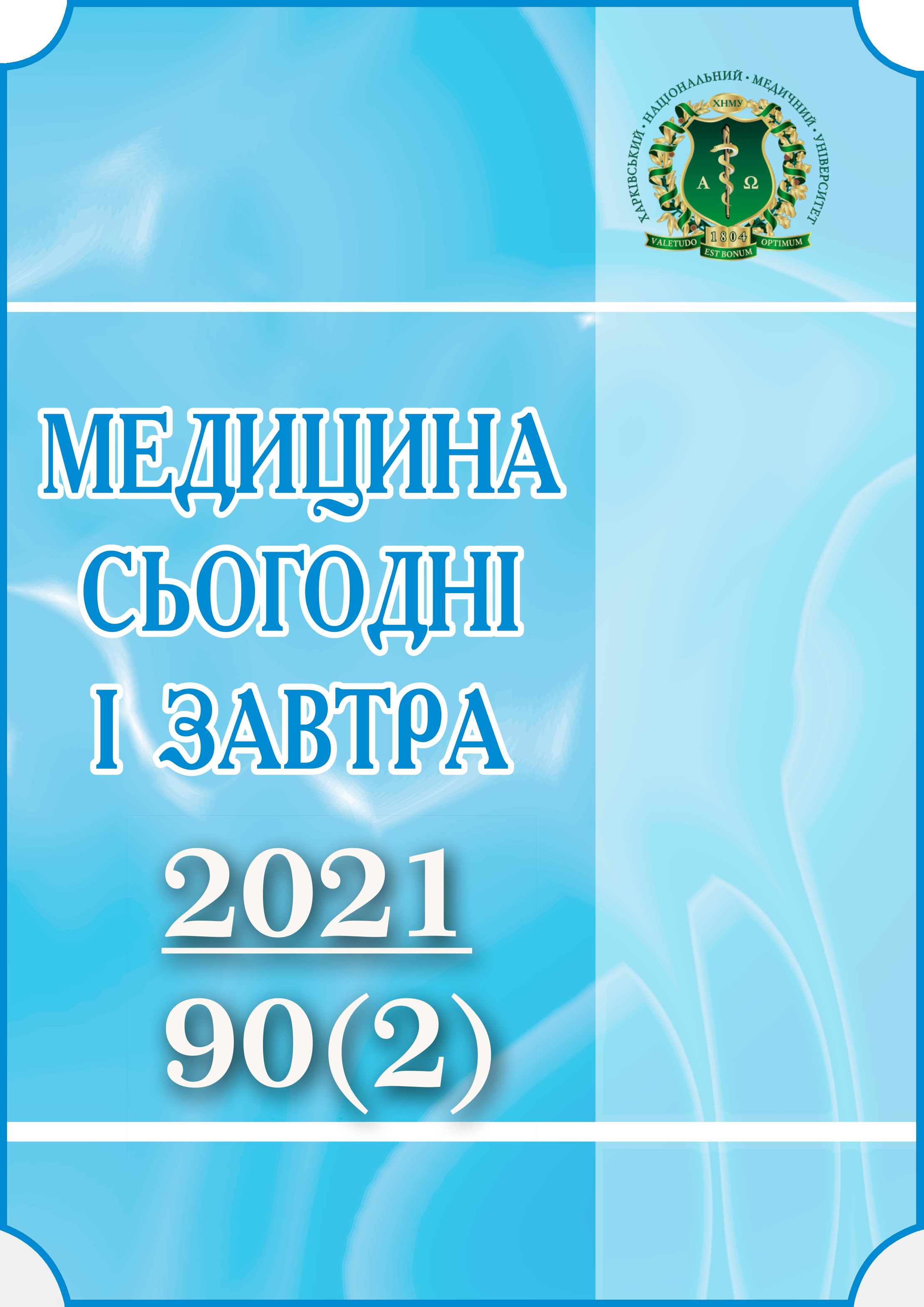Анотація
Катетеризація судин пов’язана з ризиком виникнення інфекційних ускладнень. На сьогодні в Україні відсутні нормативно-правові документи, які регламентують належний облік процедури катетеризації та порядок здійснення епідеміологічного нагляду за інфекціями, що пов’язані з внутрішньосудинними катетерами (ІПВК). Мета дослідження – оцінити повноту документування маніпуляцій, пов’язаних з встановленням та доглядом за периферичними й центральними судинними катетерами (СК), в багатопрофільному стаціонарі. За результатами ретроспективного епідеміологічного аналізу, проведеного у 2020 році щодо 131 медичної карти (МК) стаціонарних пацієнтів з нейрохірургічними захворюваннями, які перебували у відділення анестезіології та інтенсивної терапії у 2019 році, виявлено відсутність належного документування процедури катетеризації судин. Документальне підтвердження виконання процедури катетеризації судин було знайдено у 82 МК, що склало (62,6±4,23) % від проаналізованих МК. У більшості випадків інформація, яка підлягала документуванню включала наступне: місце катетеризації, розмір СК, показання до катетеризації центральної вени, методику катетеризації центральних вен, факт накладання асептичної пов’язки. Показання до установки периферичних венозних катетерів в МК майже не документувались. Інформація про заплановану тривалість катетеризації; дані щоденного моніторингу за місцем катетеризації; маніпуляції, які пов’язані з доглядом за СК (промивання СК та зміну пов’язки, яка фіксує катетер); показання до видалення СК не фіксувались. Недостатній обсяг документування процедури катетеризації ускладнює проведення моніторингу використання СК та виявлення факторів ризику ІПВК в лікувально-профілактичному закладі. Документування процедури катетеризації є невід’ємним компонентом в системі епідеміологічного нагляду за ІПВК та дозволяє керувати ризиками виникнення інфекційних ускладнень катетеризації судин.
Ключові слова: венозний катетер, ретроспективне епідеміологічне дослідження, медична карта стаціонарного хворого, чек-лист, інфекційний контроль.
Посилання
Cheung E, Baerlocher MO, Asch M, Myers A. Venous access: a practical review for 2009. Can Fam Physician. 2009;55(5): 494–6. PMID: 19439704.
Jamshidi R. Central venous catheters: Indications, techniques, and complications. Semin Pediatr Surg. 2019;28(1):26–32. DOI: 10.1053/j.sempedsurg.2019.01.005. PMID: 30824130.
Shah H, Bosch W, Thompson KM, Hellinger WC. Intravascular catheter-related bloodstream infection. Neurohospitalist. 2013;3(3):144–51. DOI: 10.1177/1941874413476043. PMID: 24167648.
Lim S, Gangoli G, Adams E, Hyde R, Broder MS, Chang E, et al. Increased clinical and economic burden associated with peripheral intravenous catheter-related complications: Analysis of a US hospital discharge database. Inquiry. 2019;56:004695801987556. DOI: 10.1177/0046958019875562. PMID: 31524024.
Cai Y, Zhu M, Sun W, Cao X, Wu H. Study on the cost attributable to central venous catheter-related bloodstream infection and its influencing factors in a tertiary hospital in China. Health Qual Life Outcomes. 2018;16(1). DOI: 10.1186/s12955-018-1027-3. PMID: 30305105.
Tacconelli E, Smith G, Hieke K, Lafuma A, Bastide P. Epidemiology, medical outcomes and costs of catheter-related bloodstream infections in intensive care units of four European countries: Literature- and registry-based estimates. J Hosp Infect. 2009;72(2):97–103. DOI: 10.1016/j.jhin.2008.12.012. PMID: 19246122.
Berezhna AV, Chumachenko TO. Svidotstvo pro reiestratsiiu avtorskoho prava na tvir [Certificate of copyright registration for the work] No.91939 "Naukovyi tvir "Forma ekspertnoi otsinky medychnoi karty statsionarnoho khvoroho shchodo naiavnosti faktoriv ryzyku infektsii krovotoku" ["Scientific work "Form of expert evaluation of the medical card of an inpatient regarding the presence of risk factors for bloodstream infections"]. Registration date: 28 Aug 2019. [In Ukrainian].
Glantz S. Mediko-biologicheskaya statistika [Primer of biostatistics]. M., Praktika [Practice]; 1998. 459 p. [In Russian].
American Society of Anesthesiologists. Practice guidelines for central venous access 2020: an updated report by the American Society of Anesthesiologists task force on central venous access. Anesthesiology. 2020;132(1):8–43. DOI:10.1097/ALN.0000000000002864. PMID: 31821240.
Wichmann D, Belmar Campos CE, Ehrhardt S, Kock T, Weber C, Rohde H, et al. Efficacy of introducing a checklist to reduce central venous line associated bloodstream infections in the ICU caring for adult patients. BMC Infect Dis. 2018;18(1). DOI: 10.1186/s12879-018-3178-6. PMID: 29884118.
O'Grady N, Alexander M, Burns L, Dellinger E, Garland J, Heard S et al. Guidelines for the prevention of intravascular catheter-related Infections. Clin Infect Dis. 2011;52(9):e162‒93. DOI: 10.1093/cid/cir257. PMID: 21460264.
Hovik LH, Gjeilo KH, Lydersen S, Rickard CM, Røtvold B, Damas JK, et al. Monitoring quality of care for peripheral intravenous catheters; feasibility and reliability of the peripheral intravenous catheters mini questionnaire (PIVC-miniq). BMC Health Serv Res. 2019;19(1). DOI: 10.1186/s12913-019-4497-z. PMID: 31488150.

